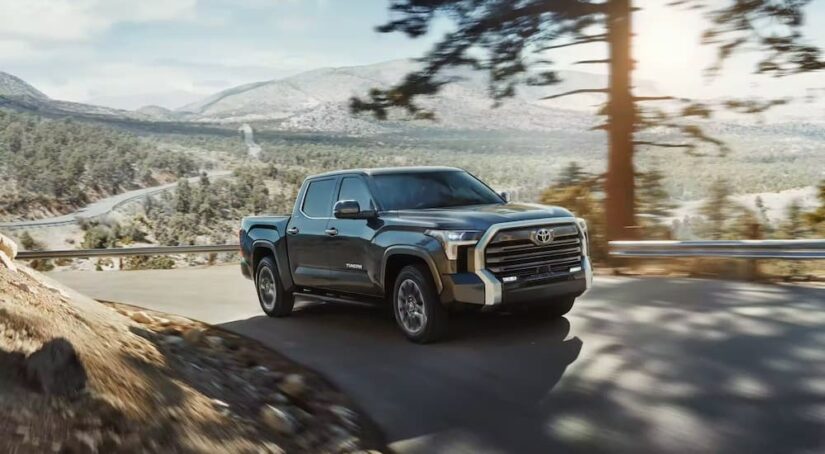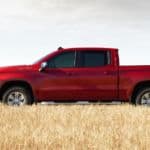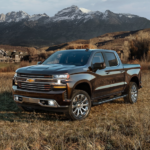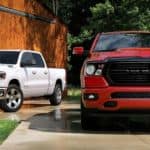Full-size pickup trucks are to be taken seriously. These machines are giant metal workhorses capable of moving mountains. Alright, that last part is a bit of an exaggeration, but that doesn’t change the fact that most people who drive pickup trucks aren’t doing so because they just like how they look. Those driving pickup trucks are doing so because no other type of vehicle can achieve the capabilities they need, or for some, there’s nothing quite like the power and sheer grunt of operating some of the biggest consumer-grade automobiles. Full-size trucks are respected, and if you’re behind the wheel of a Toyota Tundra, you’ll feel much taller than the sedans, SUVs, and midsize trucks that drive around you. You’ll even give other full-size trucks a run for their money, especially from a value standpoint.
A Toyota dealer near you has trucks like the Tundra, which is Toyota’s only full-size truck, and today I have a question for you: which would you buy? The 2023 Toyota Tundra of the 2023 Chevy Silverado? The uninformed may choose the wrong one, but I’m here to tell you why you should go with one of these full-size trucks and not the other. There’s plenty to discuss, so I won’t drag this out any further. Let’s answer the question of which full-size truck offers more, the 2023 Toyota Tundra or the 2023 Chevy Silverado 1500.
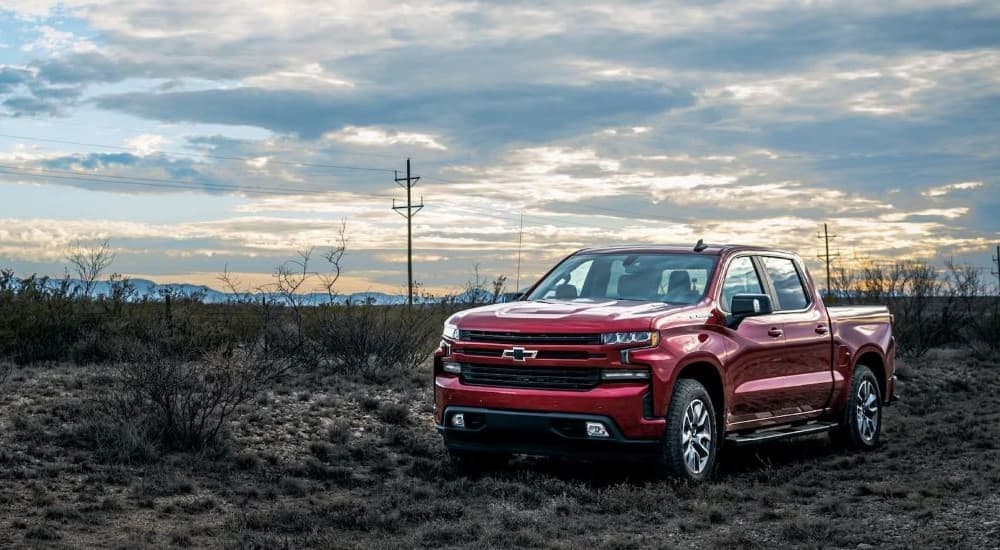
A Note on Value and Affordability
Value is important, especially when money is an object. However, a misconception is that a lower price means a better value; this isn’t the case, especially when you compare the 2023 Tundra against the Silverado 1500. The 2023 Toyota Tundra starts at an MSRP of $38,965, and the Chevy Silverado 1500 has a starting price of $36,300. Wow! Over $2,000 less than the Tundra? The Silverado 1500 must be a steal, right? In a perfect world, this would be the case.
Simply put, there’s a reason the Chevy Silverado has a lower starting price, and it isn’t a good thing. I’ll explain more about this momentarily, but this is essentially the difference between a great value and something more affordable for you and the manufacturer. But if you’re worried about not having many choices in how you plan to customize your truck, if that’s on your mind, you don’t have to fear because both Toyota and Chevy have supplied the Tundra and Silverado 1500 with over half a dozen trim levels each.
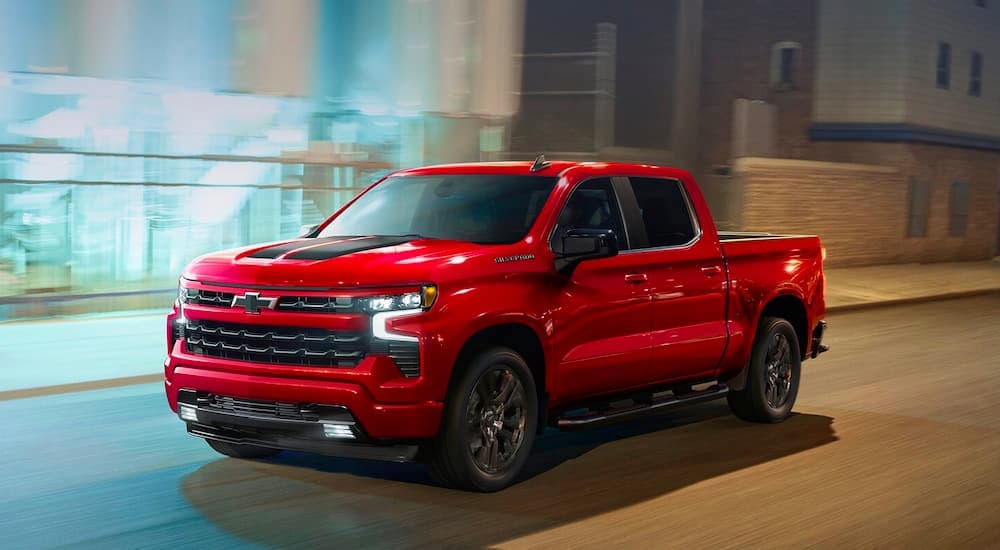
That Explains it…
Alright, no tip-toeing around the question: Why is the Chevy Silverado 1500 priced over $2,000 lower than the Toyota Tundra? Ready? It’s not as powerful. It’s that simple. However, there are a couple of other benefits the Tundra has over the Silverado 1500, but performance is the largest differentiator. You might be thinking: “No problem! I’ll spend money on the next trim and secure an engine that outperforms the Tundra!” Again, in a perfect world, this may be the case. The reality is the Chevy Silverado doesn’t support the switch to a more performant powertrain than the Tundra until you buy the RST trim. That’s not all; you need to buy the RST trim and opt for the 6.2L V8 engine. This trim alone costs $51,200.
This ultimately leaves drivers with one option if they want an experience better than the base Tundra: spend nearly $20,000 more on a Silverado with the V8 engine. If that doesn’t sound good to you, then I’m sorry, you’ll have to make do with the lesser performance. Stats like base-level performance suffer greatly on the Silverado, and the hit to things like towing capacity doesn’t make up the $2,000 you’re saving. The base-level Tundra powertrain can tow a maximum capacity of 12,000 lbs, while the Silverado models with its base model are limited to a towing capacity of 9,500 lbs, a 26% drop off from the Tundra.
The base model Tundra also pairs its engine with a 10-speed automatic transmission instead of the 8-speed automatic the Silverado’s base trim has. How about the other performance numbers? The Silverado 1500 comes with a high-output turbocharged 2.7L I-4 engine, but it’s beaten by the 3.4L i-FORCE turbocharged V6 engine that standard Tundra models come with.
In Chevy’s case, we’re looking at 310 hp and 430 lb-ft of torque. The standard Tundra’s powertrain outputs between 358 and 389 hp and between 406 and 479 lb-ft of torque, depending on the configuration. Some of the more entry-level Silverado trims allow you to swap out the base engine for an improved 5.3L V8 engine, but it still falls short with a towing capacity of 11,300 lbs. This engine outputs 355 hp and 383 lb-ft of torque, which still falls short of the Tundra, albeit this engine matches the Tundra’s 10-speed automatic transmission.
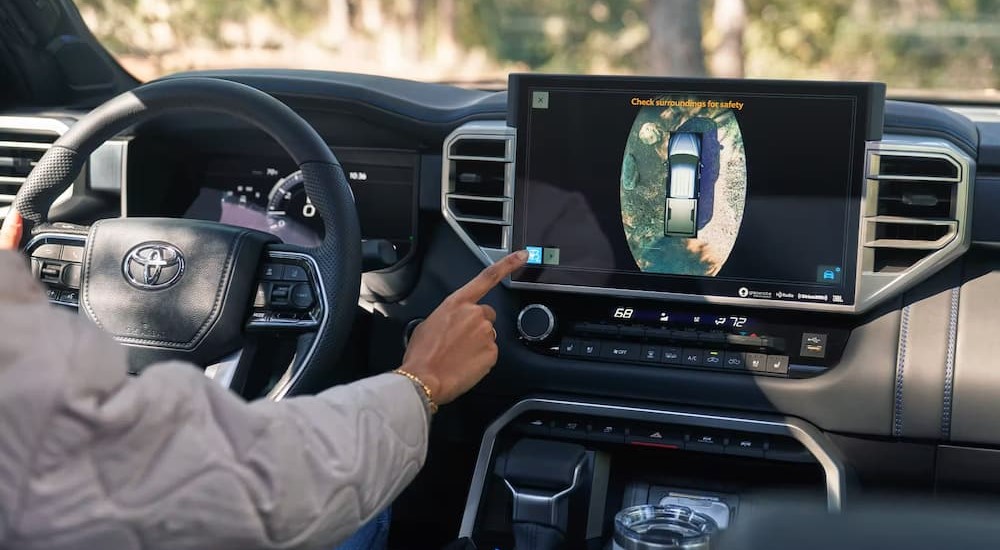
A Few More Enhancements
I’ve established how performance is a large factor in the value-to-affordability discussion between the Toyota Tundra and Chevy Silverado. However, both Toyota and Chevy’s trucks have a few more differences that make the base-level Tundra a better purchase than the Silverado 1500. The infotainment centers are a fascinating contrast, and given the performance improvements of the base Tundra, it’s hard to think the advancements made to the infotainment centers are what’s truly driving the cost up. This isn’t only the case for Chevy against Toyota, but entry-level vehicles like the base-level Silverado 1500 have a rather last-generation infotainment center that falls back on old technology.
An example is the infotainment centers’ screens. The base-level Tundra has an 8-inch touchscreen, while the Silverado 1500 still relies on a 7-inch screen. The Silverado 1500 has features you’d expect, like Apple CarPlay and Android Auto, but Toyota goes one step above and gives you wireless Apple CarPlay and Android Auto with the purchase of any 2023 Tundra. A Wi-Fi hotspot is also something that many drivers look for nowadays when shopping for a new vehicle, and you won’t find one on the base Silverado 1500 while the tech is implemented into the Tundra from the start.
The more money you spend, the better infotainment centers you will get. Does the Silverado 1500 at any point exceed the capabilities of the Tundra’s infotainment center? It doesn’t, and the screen size doesn’t outpace it either. If you upgrade the infotainment centers in either truck, the Tundra will give you a 14-inch screen, while the Silverado 1500 will give you a 13.4-inch display.
When Shopping for a Truck, Value Matters
I believe you should always consider value. Like you, I, too, would like to save money if it means I wouldn’t be gaining much from spending extra. Vice versa, if spending a bit of extra money gives you an experience greater than the sum of its parts, there’s an argument to be made as to why value and affordability are two different things, and for the most part, they should stay that way.
Something can be both a great value and affordable, but rarely are things as cut-and-dry as that; it’s important to stay vigilant because the saying “it’s too good to be true” is alive and well in the automotive industry. In situations like this, Chevy can say they have the cheaper pickup truck, and they’d be right, but that doesn’t mean it’s a great value. There are many things someone can tell you about why one thing is a better value than the other, but if you look at the Tundra and Silverado side-by-side, maybe even test drive both trucks, you’ll be amazed these two trucks aren’t priced too far apart.
